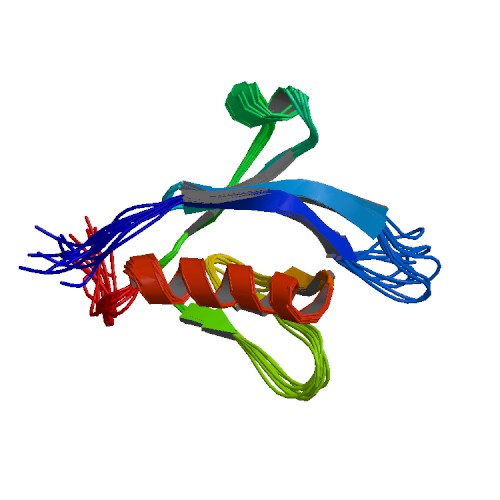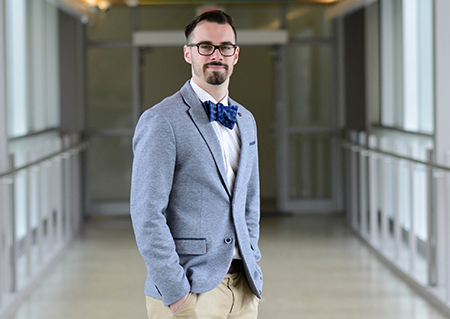
3D model of the FAPP2 protein.
At University of Alberta TIMbit Tuesday events you'll find plenty of bite-sized donut morsels, free coffee and stimulating short presentations by trainees and scientists about the latest developments in cancer research, hosted by the U of A student-led group, CureCancer.
TIMbit is an acronym for Technology, Innovation and Medicine, and this week's TIMbit Tuesday on December 6 drew specialists from the departments of oncology and biochemistry. With Movember coming to a close, the group wanted to place an emphasis on men's health and focus the discussion around advances in prostate cancer research.
The session opened with research associate Lian Willetts, a bold pioneer in prostate diagnostics. She was the 2015 Falling Walls Young Innovator of the year.
Although the prognosis for prostate cancer is good, when the illness spreads to bones and lymph nodes there is an increase in mortality. Willetts aims to improve treatment for these cases with higher-quality diagnostics and preventative treatments. Willetts and her research team have developed an accurate diagnostic device that requires only a single drop of blood to predict if the prostate cancer will metastasize. Their group is currently collaborating with multiple prostate cancer centres around the world to optimize the platform for clinical use.
Kausar Saboohi presented her research on the protein FAPP2, which is found at high levels in breast and prostate tumours. She is studying the genetic mutations and defects that cause abnormalities in the 3D structure of FAPP2, which may result in abnormally active proteins. She uses a technique called protein thermal shift to study and screen interactions between small molecules a
Cameron Smithers, third-year PhD student in biochemistry and co-founder of CureCancer, was the final presenter. He shared his work on the development of new prostate cancer drugs using a new approach known as fragment-based lead discovery (FBLD). The method finds lead compounds as part of the drug discovery process and is based  on identifying small chemical fragments that may bind to the biological target.
on identifying small chemical fragments that may bind to the biological target.
Smithers said the reason he and his fellow U of A cancer researchers established CureCancer was to connect the public with both local scientists and the agencies that fund them. "It is important for us to engage with the public as a means of showing the value of our publicly-funded cancer research, to illustrate how these investments result in meaningful discoveries that lead to better understanding cancer diagnostics and therapeutics," he added.
The CureCancer team hopes to expand their audience and presence in Edmonton over the next year. The next TIMbit Tuesday event will be held Tuesday March 7, 2017.
Did you know you can support cancer research at the University of Alberta?
The Cancer Research Institute of Northern Alberta (CRINA) is a pan-university translational institute that aims to educate researchers, public and special interest groups about the value of translational cancer research. CRINA facilitates collaboration to increase commercialization, knowledge translation and clinical uptake. A donation to CRINA means every research dollar can go further to generate impactful cancer research discoveries. Support cancer research by making a gift to CRINA here.
Meet our partners in innovation:
CureCancer is financially supported by an Alberta Innovates - Health Solutions (AIHS) Community Engagement and Conference Grant. This funding provides stability and support for the student-led CureCancer team as they host more TIMbit Tuesday events in 2017.
Special thanks to NACTRAC for also contributing funds to support CureCancer's TIMbit Tuesday event this December.